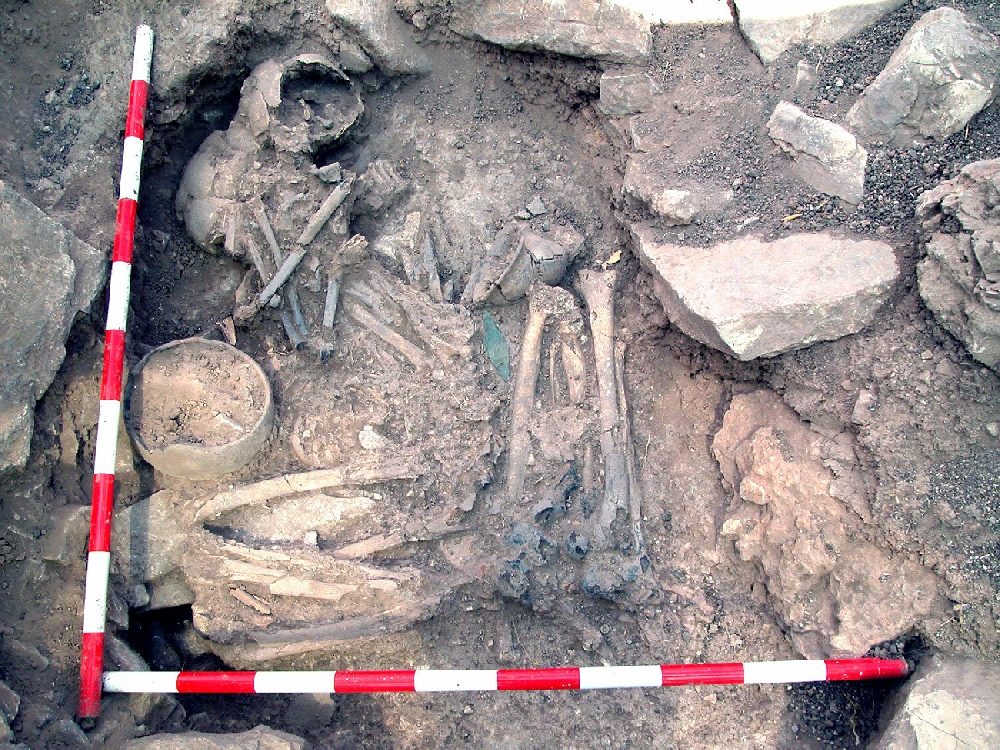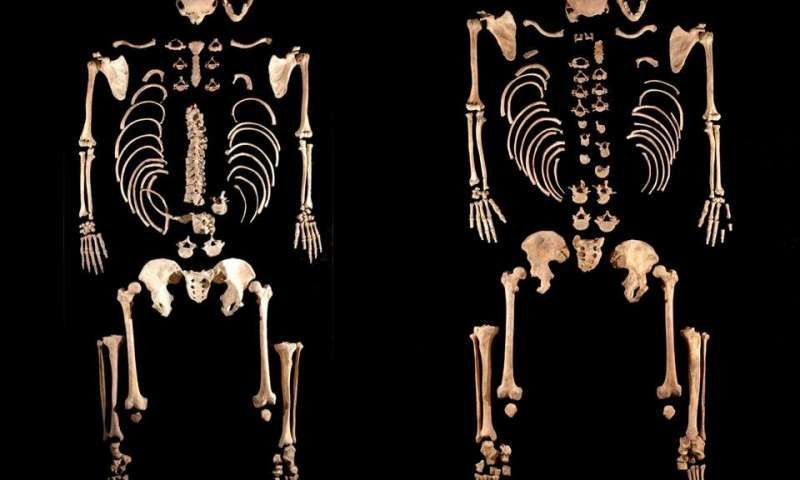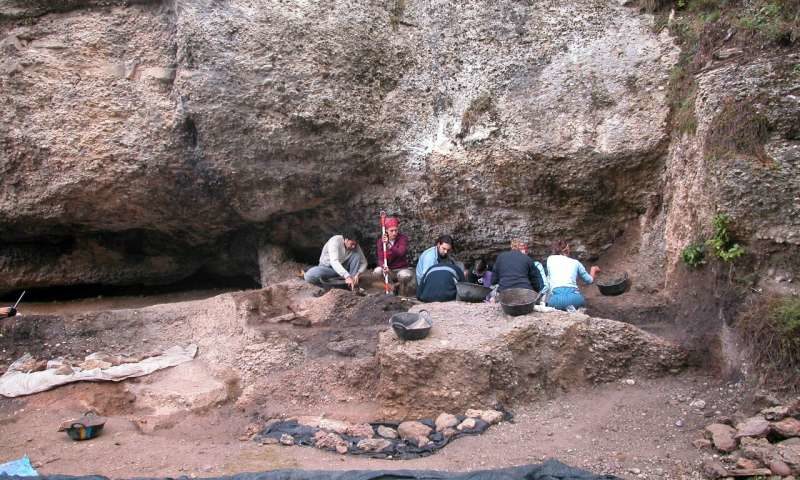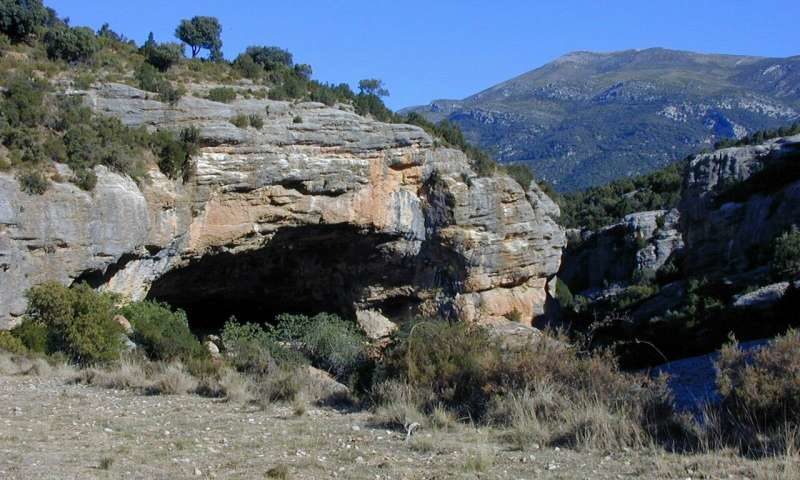
Starting in 2500 B.C. and continuing for about 500 years, the analyses indicate, tumultuous social events played out that reshaped Iberians' paternal ancestry continuing to today.
"This is one of the strongest pieces of evidence in ancient-DNA research of sex bias in the prehistoric period," said Iñigo Olalde, a postdoctoral fellow in the lab of David Reich at Harvard Medical School and first author of the study.
The work, published in Science March 15 by a 111-person international team led by researchers at Harvard Medical School and the Institute of Evolutionary Biology in Barcelona, Spain, also details genetic variation among ancient hunter-gatherers, documents intermingling of ancient Iberians with people from North Africa and the Mediterranean, and provides an additional explanation for why present-day Basques, who have such a distinctive language and culture, are also ancestrally different from other Iberians.
Some of the findings support or clarify what is known about the history and prehistory of Iberia, while others challenge them.
"It's amazing how the technology of ancient DNA, when combined with information from archaeology, anthropology, linguistics and the study of historical records, can bring the past to life," said Reich, professor of genetics in the HMS Blavatnik Institute, an investigator of the Howard Hughes Medical Institute and co-senior author of the study.
The team analyzed genomes from 403 ancient Iberians who lived between about 6000 B.C. and 1600 A.D., 975 ancient people from outside Iberia and about 2,900 present-day people.
271 of the ancient Iberian genomes had not been published before. Nearly two-thirds came from skeletons no older than 2000 B.C., boosting by 25 times the number of publicly available genomes from this relatively recent period.
As far back as 2500 B.C., the researchers found, Iberians began living alongside people who moved in from central Europe and carried recent genetic ancestry from the Russian steppe. Within a few hundred years, analyses showed, the two groups had extensively interbred.
For example, at a Bronze Age site known as the Castillejo de Bonete in Spain where a woman and man were found buried side by side, analyses revealed that the woman's ancestry was entirely local, while the man had very recent ancestors from central Europe.
To the researchers' surprise, men and women from the two groups contributed strikingly unequal proportions of DNA to subsequent generations.
Before the central Europeans moved in, Iberians had no detectable recent ancestry from outside the Iberian Peninsula. After 2000 B.C., 40 percent of Iberians' overall ancestors and 100 percent of their patrilineal ancestors-that is, their father and their father's father and so forth-could be traced to the incoming groups from central Europe.
"The results were astonishing," said Carles Lalueza-Fox, principal investigator of the Paleogenomics Lab at the Institute of Evolutionary Biology and co-senior author of the study. "The data suggest there was a major genetic change that is not obvious from the archaeological record."
What could have instigated such a dramatic turnover is not yet clear.
"It would be a mistake to jump to the conclusion that Iberian men were killed or forcibly displaced," said Olalde, "as the archaeological record gives no clear evidence of a burst of violence in this period."
One alternative possibility is that local Iberian women preferred the central European newcomers in a context of "strong social stratification," said Lalueza-Fox.
Genetic data alone will not reveal the whole story, the researchers emphasize.
"Other fields such as archaeology and anthropology need to be brought to bear to gain insight into what shaped these genetic patterns," said Reich.
"Our study offers a change in perspective and invites people to look at the archaeological record again with different eyes," said Lalueza-Fox.
Analyzing additional samples from this time period-the researchers had about 60-could provide greater detail about the genetic turnover or reveal that Y chromosomes shifted less in some populations or regions of Iberia than others.
As the centuries passed, paternal ancestry continued to evolve, the team found. Still, most present-day Iberian men can trace their paternal ancestry to these Bronze Age newcomers.
A slice through time
Groups of hunter-gatherers scattered across Iberia had markedly different genetic makeup from one another in the Mesolithic era, from about 8000 B.C. to 5500 B.C., suggesting that new groups of hunter-gatherers migrated to Iberia and transformed local populations before farmers arrived with their own distinct ancestry from Anatolia (present-day Turkey). An independent study of Iberian hunter-gatherers, published in Current Biology on the same day as the Science paper, reaches similar conclusions.
One person buried in Iberia between 2400 B.C. and 2000 B.C. had entirely North African ancestry, and a second person who lived between 2000 B.C. and 1600 B.C. had a grandparent with North African ancestry. Researchers have known that the two regions engaged in trade at that time; the new study confirms that people also moved from Africa to Europe.
Samples from Iron Age people who lived around 900 B.C. to 19 B.C. in areas where very different languages were spoken all had significant ancestry from the Russian steppe. This suggests that influxes of people did not always spark linguistic changes, specifically the adoption of Indo-European languages, the study authors said.

North African ancestry was more widespread in Iberia during the Roman period (about 20 B.C. to 400 A.D.) than previously appreciated, especially in the south. The genetic influences occurred well before groups from North Africa conquered Iberia during the 8th century A.D.
These and other insights were made possible by an exceptionally robust collection of samples over a long period of time from a relatively small region, said Reich.
"Beyond the insights this study provides about the history of Iberia itself, it highlights the potential of future studies that focus on ancestry changes over time using large sample sizes in relatively small regions of the world," he said.
Historic opportunity
Much of the new study addressed the historical era, meaning the period in which written records exist. Most other ancient-DNA research has focused on prehistoric periods.
"When I was a child, I used to read old history books on Iberia that were at home," said Lalueza-Fox. "They essentially started with the Iron Age Iberians (Íberos), then the Punics, the Greeks, the Roman conquest, the Barbarian invasions, the Muslim invasion, the reconquest and so on. I always wondered who these people really were, what mark they left in modern people and what all these movements meant in terms of numbers.
"Now, for the first time, we are able to study the remains of such people genetically and to integrate the genetics not only with archaeology and anthropology but also with historical accounts," he said.
Ancient-DNA studies often "end in midair," stopping many millennia ago, said Reich. The new study represents an effort to bridge the gap so that genetics can "eventually connect the distant past all the way through to people living today," said Lalueza-Fox.





1, Hyksos in Egypt
2, Sea People:
a, Peleset are Palestinians. They were imprisoned and brought to Egypt. This biblical story
b, Labu or Libu aka Libyans. Pale skin, blond/ red hair, blue eyes, tatoo. See pictures.
[Link]